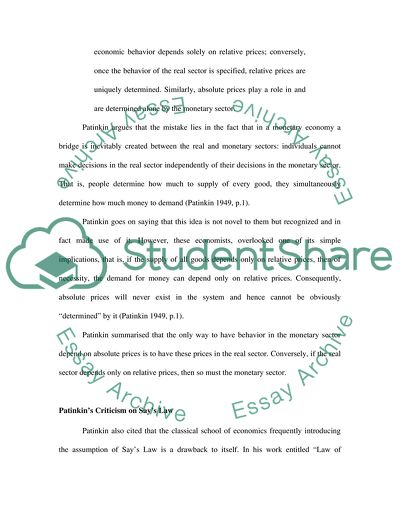Cite this document
(Patinkin's Critique of the Classical Theory of Price Determination and Research Paper, n.d.)
Patinkin's Critique of the Classical Theory of Price Determination and Research Paper. Retrieved from https://studentshare.org/macro-microeconomics/1703464-monetary-economics-essay-title-of-essay-discuss-patinkins-critique-of-the-classical-theory-of-price-determination-and-his-proposed-remedy-for-its-alleged-p
Patinkin's Critique of the Classical Theory of Price Determination and Research Paper. Retrieved from https://studentshare.org/macro-microeconomics/1703464-monetary-economics-essay-title-of-essay-discuss-patinkins-critique-of-the-classical-theory-of-price-determination-and-his-proposed-remedy-for-its-alleged-p
(Patinkin'S Critique of the Classical Theory of Price Determination and Research Paper)
Patinkin'S Critique of the Classical Theory of Price Determination and Research Paper. https://studentshare.org/macro-microeconomics/1703464-monetary-economics-essay-title-of-essay-discuss-patinkins-critique-of-the-classical-theory-of-price-determination-and-his-proposed-remedy-for-its-alleged-p.
Patinkin'S Critique of the Classical Theory of Price Determination and Research Paper. https://studentshare.org/macro-microeconomics/1703464-monetary-economics-essay-title-of-essay-discuss-patinkins-critique-of-the-classical-theory-of-price-determination-and-his-proposed-remedy-for-its-alleged-p.
“Patinkin'S Critique of the Classical Theory of Price Determination and Research Paper”, n.d. https://studentshare.org/macro-microeconomics/1703464-monetary-economics-essay-title-of-essay-discuss-patinkins-critique-of-the-classical-theory-of-price-determination-and-his-proposed-remedy-for-its-alleged-p.


